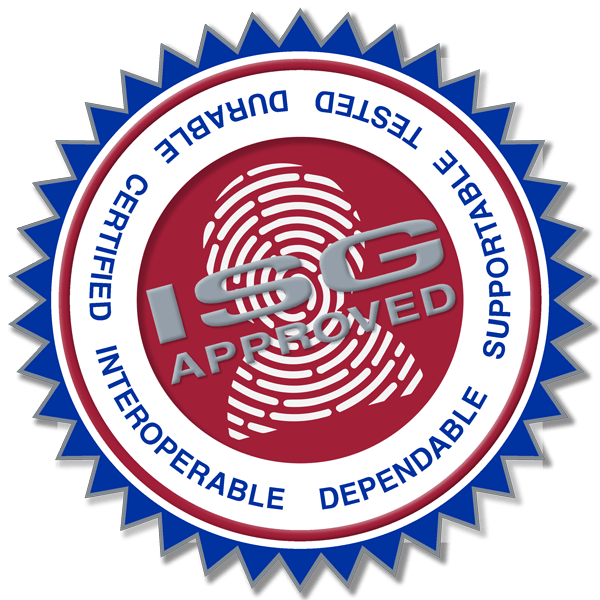Re-posted with permission from Campus Safety Magazine and edited.
Depending on the application, a wireless access control system can allow a campus to achieve wired solution functionality at a lower cost.
Wireless systems are proving to work with practically all of today’s access control systems, so it’s no surprise that they’re quickly becoming an attractive alternative to traditional hardwired solutions.
How Wireless Works
Simply stated, “A wireless system is a platform that allows system data to transmit back to the main panel over wireless signals instead of transmitting over hardwiring,” says Brach Bengtzen, marketing manager for ProdataKey.
A wireless solution can be broken into three sections, notes Jack Lewis, technical services manager for Camden Door Controls. The first is between separate controllers. The second is from the controller to the door access location and the third, from the reader at the door to the credential device the user is carrying.
“A wireless solution between access control panels must be bidirectional with much more stringent requirements for throughput, latency, plus encryption,” says Lewis. “A wireless solution for peripheral devices that includes a request-to-exit device, door position switch and card reader wired to an access control panel is usually unidirectional, sending a short momentary signal. And a wireless solution between the reader at a door to the user’s credential must be encrypted and secure.”
There are several different technologies used in wireless access control deployments, and of course not all of them are equal. So says Lisa Corte, director of product management, Access and Egress Hardware Group, ASSA ABLOY Opening Solutions Americas.
“Wireless electronic access control technologies are often categorized by their frequency band. Today, access control systems predominantly reside on either 2.4GHz or 900MHz bands,” she says. “Many manufacturers offer their own variations within these broad RF categories, making for a highly diverse selection of individual technologies.
For example, some offer alternative versions of open-architecture, secure WiFi-based wireless electronic access control in the 2.4GHz range, using either open or proprietary standards. Others offer open or proprietary ZigBee or ZigBee-based technologies in the 2.4GHz band. There are also proprietary 900MHz solutions that have been on the market for more than a decade.”
She adds that WiFi access solutions can generally be installed and deployed in much less time than traditional wired openings.
“WiFi locks are offline most of the time, ‘coming to life’ briefly when a credential is presented, to announce user-specified alarm conditions, and at regular intervals to update access rights and transmit audit trails,” she says. “With intelligent WiFi locks, access rights are stored in the lock itself, protecting it from a network or power failure and eliminating the need for access control panels.”
Corte recommends such locksets for openings that have relatively stable access rights — residence halls, classrooms or office applications, for example.
Wireless Versus Cloud or Mobile
Wireless is very different from Cloud and mobile, Bengtzen emphasizes. Wireless is simply a form of communication from one device to another, he says, while Cloud is referring to the ability to manage, configure and update systems remotely from any device.
Mobile, he adds, is all about managing, configuring and using the system from a smartphone or similar mobile device.
“Mobile apps for access control systems may communicate over WiFi, but this type is not what we’re talking about when we refer to a system as ‘wireless,’” he says.
While wireless, Cloud and mobile all offer many of the same benefits, they are used in very different ways, Corte echoes. Wireless typically refers to the way access control devices connect to the host system.
Cloud-based services, she notes, allow you to store data on servers owned and maintained by a third party, rather than having to assume responsibility for the cost and maintenance of onsite support, such as anti-virus software, patches, updates, backup and HVAC cooling. Cloud services can be very beneficial, Corte contends.
“Mobile can include the use of a smartphone as a credential or the use of a phone to commission access control locks in the field,” she says. “More commonly, it is referring to the use of mobile credentials. All three technologies make access control easier, more affordable and more scalable, though they are used in different aspects of a deployment.”
All or Nothing?
David Price, vice president corporate communications and business development for Camden Door Controls, explains that wireless access control should allow for hybrid systems to offload some of the more costly wireless devices when they are not required.
“If all the access controllers are in close proximity, it would be preferred to hardwire-network the devices, as a hardwired connection for transfer of large digital files across a network would ensure timely, reliable data transfer,” he says.
Price adds that peripheral devices requiring their signals reach a control panel can benefit from wireless since controlled doorways tend to change over the life of a building.
Bengtzen also believes there are scenarios where hybrid systems are a better solution. Some forms of construction prevent strong wireless communication signals and are perfect examples where using a combination of wireless and Ethernet-connected devices can build the strongest system possible.
Conversely, he notes, there are scenarios where a customer might prefer to install a hardwired system, but there are a few locations on the property where running cabling would be either extremely expensive or even impossible. For those spots, wireless can often be used.
Come back next week for Part 2!
Talk To Your Local ISG Expert
The ISG offers a wide range of wireless access control solutions that can be integrated with your campus card solution. Whether you are a K-12 school, a college or university, a healthcare facility or a corporation, we have physical and logical access control solutions that will satisfy your needs.
Original article written by Erin Harrington for Security Sales & Integration


